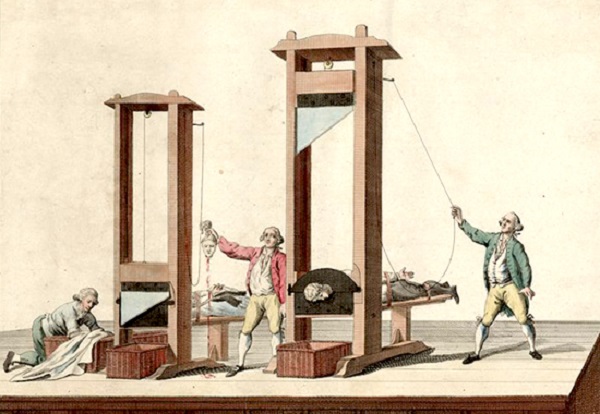First published in 1866, Fyodor Dostoevsky’s novel Crime and Punishment is widely considered to be one of the best realistic psychological novels ever written. What is perhaps less widely known is that some of the story’s realism stems from being based on an actual criminal and the murders he committed. In honor of the 150th anniversary of the novel’s publication, here’s a look at the real life crime that inspired the classic fictional one.

Source: Amazon
If you haven’t yet read Crime and Punishment (or need a quick refresher), the novel tells the story of Rodion Romanovich Raskolnikov, a student living in St. Petersburg. Both desperately poor and extremely intelligent, Raskolnikov formulates a theory that certain individuals are superior to the rest of humanity. These individuals, he claims, are not bound by the same laws that govern the rest of humanity. Rather, their extraordinary nature means that they possess both the ability and the right to commit various crimes, especially in the pursuit of some higher purpose. In an attempt to prove to himself that he is one of these superior “supermen,” Raskolnikov murders a greedy, avaricious pawnbroker and her sister. He justifies his actions on the grounds that, by killing the unscrupulous pawnbroker, he has rid society of a “louse,” who preyed upon and harmed others. Furthermore, he argues, he can use the money stolen from the dead woman to perform acts of charity, thereby counterbalancing his crime. Following the murder, however, Raskolnikov finds himself tormented by guilt and an overwhelming need to confess, which he eventually does.
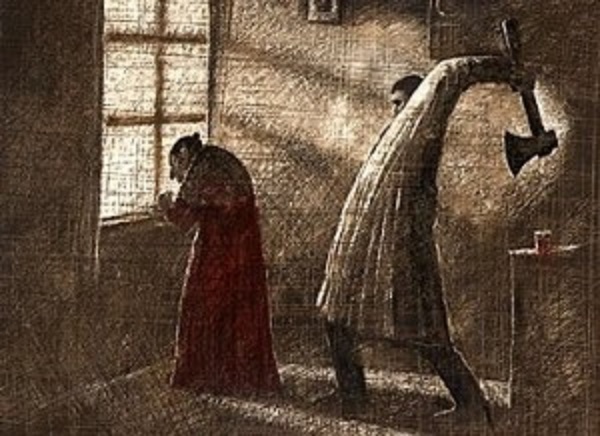
Source: Litrony
This was not Dostoevsky’s original plan for the novel, though. He first envisioned it as a story about alcoholism and its effects on family life, titled The Drunkards. However, this theme was relegated to a side plot in the novel after Dostoevsky read about the case of real life French criminal Pierre Francois Lacenaire, who became the inspiration for Raskolnikov.
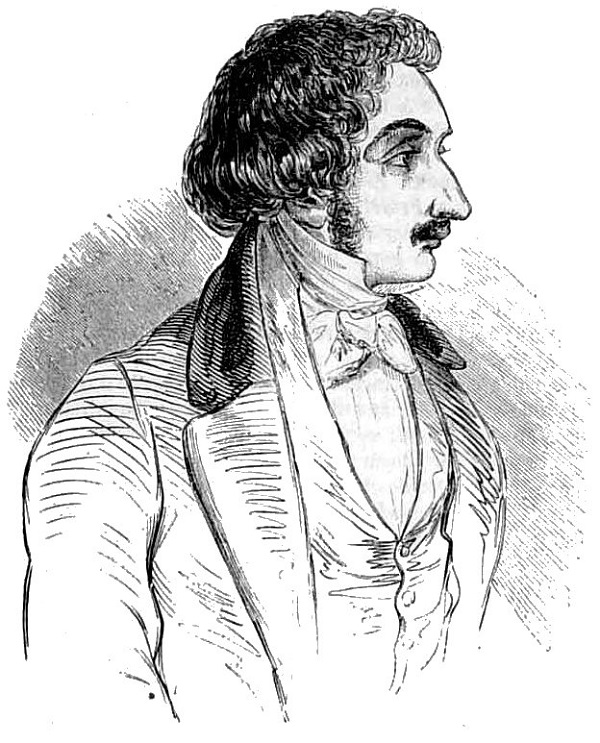
Source: Wikipedia
Born in 1800, Lacenaire joined the French army after finishing his education, but deserted a few years later and subsequently spent time in and out of prison for various petty crimes. It was not until 1834 that he committed the murders which granted him notoriety and inspired Dostoevsky. In December of that year, Lacenaire and an associate murdered a slum-dwelling transvestite named Chardon and his elderly mother. Lacenaire and his accomplice believed the victims to be in possession of a great deal of money, which served as the motive for the crime, but they were mistaken in this regard and forced to flee the scene empty-handed. Two months later, Lacenaire was arrested for the murders. He was eventually convicted of the crimes and was executed by guillotine in January of 1836.
Readers of Crime and Punishment will notice the parallels between Lacenaire’s crime and Raskolnikov’s almost immediately. Although Raskolnikov, unlike Lacenaire, acts alone, both men kill an unsavory character from the underbelly of society, as well as a more innocent relative. The motive in both cases is money, yet both men come away from their crimes with little or nothing of value. Even the weapon is the same, with both men using hatchets to dispatch their victims. However, it isn’t just the technical details of the crime that served as inspiration for Dostoevsky’s novel. The author drew heavily not just on Lacenaire’s crime, but on Lacenaire himself— particularly his attitude towards and justification for his crimes— when he crafted the character of Raskolnikov.
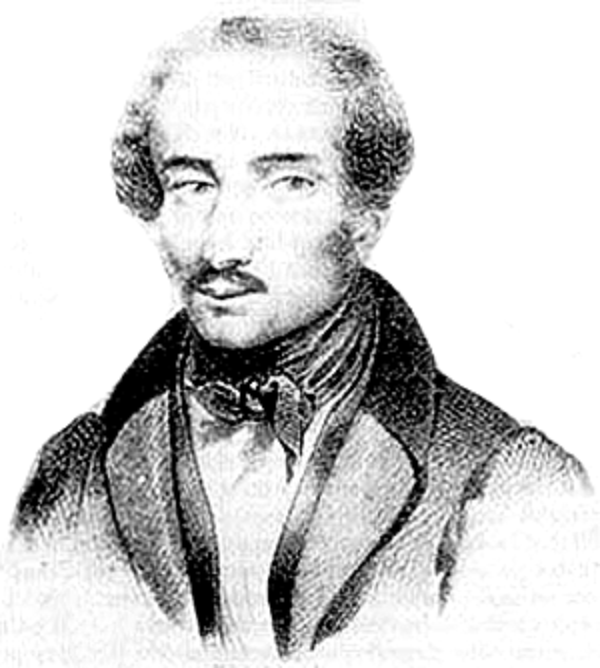
Source: Republique des Lettres
There are differences between the two men, certainly. Lacenaire was a disgraced soldier with a history of petty crime, while Raskolnikov is an impoverished student who, at the time of the murders, has no criminal record. Lacenaire was also a far more flamboyant figure than the taciturn and sullen Raskolnikov (the Frenchman famously held press conferences while in prison, allowed a phrenologist to measure his head, and appeared at his murder trial dressed in the height of fashion). However, both men were intelligent and well-read intellectuals. Lacenaire, who excelled at his education, passed his time in prison reading the classics, eventually bequeathing his extensive library to his jailer. He also wrote on the subject of crime, authoring both a satirical poem, Petition of a Thief to a King, his Neighbor, and a magazine article on the penal system from his jail cell. Similarly, Raskolnikov is a highly intelligent scholar, who occupies himself writing a treatise on his theory of crime.

Source: In The Loop
Raskolnikov also emulates Lacenaire in his justification for his crimes and his attitude towards humanity at large. Lacenaire spoke of the “contempt” and “gnawing hatred” he felt for the “whole of humankind.” This disdain for his fellow man is shared by Raskolnikov, who regards himself as a superior, Napoleon-like figure, in contrast to the rest of the population, whose inferiority renders them fit for nothing more than the basic propagation of the species. At his trial, Lacenaire gave a detailed confession of his crimes in which he argued that his criminal activity was not only a valid form of protest against an unjust society, but had rid the world of an unsavory and undesirable character. Raskolnikov’s own confession near the end of the book closely parallels Lacenaire’s, and throughout the novel he offers much the same justification for his crime.
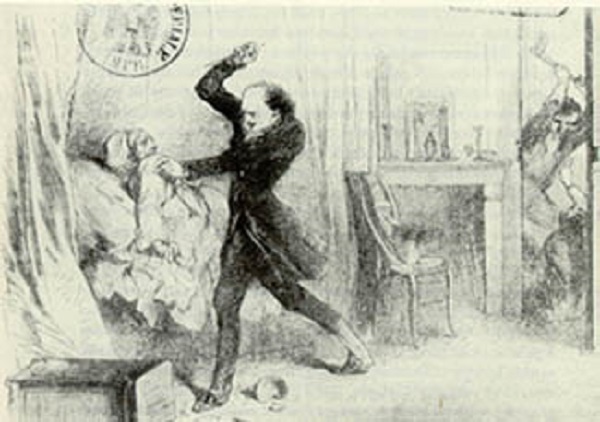
Source: Mt. Holyoke
They say that truth is stranger than fiction. Whether Lacenaire’s case is stranger than Raskolnikov’s, I don’t know. In this case, however, a strange truth certainly inspired some truly great fiction.
YouTube Channel: Wisecrack
Featured image via Pixabay
